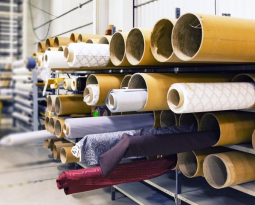Oregon Patent of the Month – September 2021
“Holonomic” refers to the relationship between controllable and total degrees of freedom of a robot. ADASA, Inc. has designed a holonomic RFID reader with 6 degrees of holonomic motion for inventory scanning. This provides greater mobile directionality and movement capabilities for the device to maneuver a sales floor automatically. Readers, also called interrogators, are devices that transmit and receive radio waves in order to communicate with RFID tags. The design for this RFID reader solves seven important problems previously encountered in the RFID inventory counting process. The solutions to these need to make sense in the context of a retail business perspective:
- Push-button inventory
- Safety
- High availability
- Quiet operation
- Minimal disturbance to sales floor
- Centimeter location accuracy
- Low capital expense
Push button inventory solutions are achieved when RFID tags are ready automatically. ADASA’s RFID reader uses a beam positioning system to effectively direct the RF interrogation beams, illuminating and interrogating each RFID tag automatically.
Safe movement of a scanning device requires separation of people and objects from the fast-moving parts of the device. In order to ensure both users and customers are safe when the RFID reader is in use, ADASA uses a dual-elliptically polarized antenna which is lightweight and efficiently moves the entire device safely.
The design is a mobile device that quietly rolls through the store or inventory storage, capable of scanning RFID tags at various heights and with high-resolution item localization accuracy. This covers the bases for problems 3-6.
Finally, the device ensures low capital expense relative to the large overhead associated with any RFID reader. This device scales in production better than other designs since it can read RFID tags over a greater area than even the “best” long-range readers.
Are you developing new technology for an existing application? Did you know your development work could be eligible for the R&D Tax Credit and you can receive up to 14% back on your expenses? Even if your development isn’t successful your work may still qualify for R&D credits (i.e. you don’t need to have a patent to qualify). To find out more, please contact a Swanson Reed R&D Specialist today or check out our free online eligibility test.
Who We Are:
Swanson Reed is one of the U.S.’ largest Specialist R&D tax advisory firms. We manage all facets of the R&D tax credit program, from claim preparation and audit compliance to claim disputes.
Swanson Reed regularly hosts free webinars and provides free IRS CE and CPE credits for CPAs. For more information please visit us at www.swansonreed.com/webinars or contact your usual Swanson Reed representative.

















